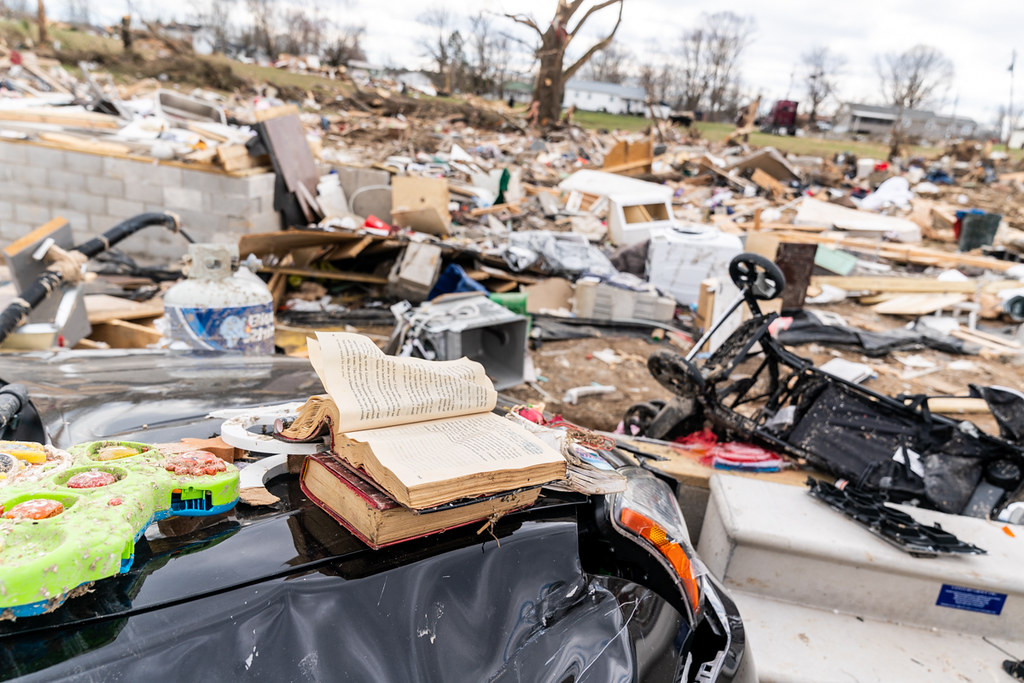The third of these programs, Urban Renewal, was a federal program started in 1949 with the goal of clearing large slum areas in and around the downtown areas of American towns and cities through the government’s coercive use of eminent domain and replacing the slums with new commercial development. The arbitrary premise behind Urban Renewal was that, if left alone, developers in the free market would not rebuild or renovate slum properties, without the government helping them to do so by first condemning the properties.
The program was to allegedly work as follows: a real estate developer would propose to redevelop a run-down area, and the local government would then condemn the land with its power of eminent domain, destroy the buildings on it, and sell it to the developer. The developer was then supposed to redevelop the land with new, upscale commercial development.[11]
In actual fact, the program usually ended up working differently.
Many developers did propose new developments, in response to which governments condemned large areas of cities. But very often the process ended there. The existing buildings were not immediately torn down nor were new projects constructed. Instead what happened was the condemned areas were redlined by lenders for new investment, just as were areas in which minorities lived under the FHA.
In addition, because of the prospect of their buildings being demolished by the local government at any time, property owners in the condemned areas wouldn’t maintain their buildings. Over time, urban renewal areas became slums even more fetid than they were before condemnation. Eventually, many such areas became bulldozed anyway, not to make way for shimmering new emerald cities, but simply because they became nuisances.
As for the new projects, many never materialized, usually because there was no demand for them (or the developers’ initial proposals were shams to begin with).
Urban Renewal disfigured cities because of the introduction of eminent domain into the land development process. Normally, developers demolish buildings only after the developers have acquired the properties on which these buildings are located, and only after they know demand exists for more profitable developments in their place; thus, there are normally few properties in economically healthy cities that end up vacant as a result of market forces, and those that do normally don’t stay so for long.
But with eminent domain, governments suddenly became able to arbitrarily condemn far more land than was ever demanded for new development, whether demand existed for such development or not. With this ability, it became possible for government bureaucrats to literally tear down an entire city.
The lasting effect of urban renewal is the large number of vacant lots that one sees in the downtowns of almost all except the largest or fastest-growing American cities; many have since been turned into parking lots for interstate highway commuters.
These large amounts of vacant land are not only eyesores; like the open spaces in public housing projects, they are no-man’s lands that are hard to patrol and become hangouts for the undesirables who cause many downtowns to develop reputations for being dangerous.
Proponents of urban renewal attempt to justify the program on the grounds that a few urban renewal projects did actually materialize as proposed, with the construction of new, upscale developments on the sites of former slums. Examples include Constitution Plaza in Hartford, Government Center in Boston, and Embarcadero Center in San Francisco.
However, these projects were all built in office markets that were so active at the time these projects were constructed that they would’ve been built anyway, with or without Urban Renewal.
Notes
[11] Anthony J. Catanese and James C. Snyder, Urban Planning (New York, 1979), at 24-26.
Related Articles in Series:
- The Disfigurement of the American City, Part 1
- The Fruits of Public Housing: Ghettos: A Tale of Two Kinds of Cities, Part 2
- Redlining and the Federal Housing Administration: A Tale of Two Kinds of Cities, Part 3
- Slums: The Legacy of “Urban Renewal”: Tale of Two Kinds of Cities, Part 4
- The Interstate Highway System and the Disfiguring of America, A Tale of Two Kinds of Cities: Part 5
- The Political Root of the Destruction of the American City, and Its Solution: A Tale of Two Kinds of Cities, Part 6




